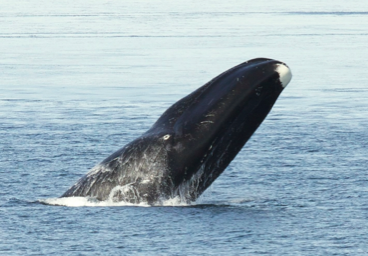Current Research

Sea ice loss increases vessel traffic in bowhead whale core use areas
Reductions in sea ice and a longer “open water” season have increased vessel traffic through the Bering Strait and expanded transit opportunities in the Northwest Passage and Northern and Transpolar Sea Routes. While only two percent of harvested bowhead whales have been documented with vessel strike scars, increased vessel traffic has the potential to increase vessel strikes, especially in the Bering Strait and southern Chukchi Sea, areas that overlap with bowhead whale core use areas. These are also areas where satellite tag and passive acoustic data suggest that some whales are spending winter instead of the northwestern Bering Sea. Additional questions remain about disturbance due to vessel noise and the general trends in vessel traffic in the Bering Strait and Chukchi Sea. Knowledge of the trends in vessel traffic and potential overlap between with bowhead whale core use areas will be useful for understanding future risk to this population.
Fin and sperm whale year-round presence in sub-Arctic habitats
With the Atlantification of the Arctic, sub-Arctic and temperate cetacean species are pushing further north, especially around the Svalbard archipelago, an area where Atlantic water intrusion is changing the trophic community. Historically limited by sea ice, fin whales (Balaenoptera physalus) sperm whales (Physeter macrocephalus) are now being documented in the high Arctic (≥80°N). We hypothesized that the northward expansion might indicate year-round presence in sub-Arctic regions. We analyzed multi-year passive acoustic data collected on a mooring deployed on the continental slope southwest of Svalbard to assess the temporal acoustic presence of fin and sperm whales. Fin whales were present year-round. Detections and call diversity were greatest in fall and spring and lowest in summer with 20-Hz and 130-Hz calls peaking in September and dowsweeps present fall and spring. Sperm whales were present year-round with peaks in summer and fall. The summer and fall size classes included a mix of adult males, adult females and/or juvenile males, and immature males/females with a shift to adult males in the winter. A year-round acoustic presence of fin and sperm whales suggest the region is a mixed-use habitat for foraging and reproductive related activities. However, as warming in the Arctic continues to decrease sea ice, it remains to be seen how the distribution patterns and the demographic structure of these whales’ habitats may continue to change.